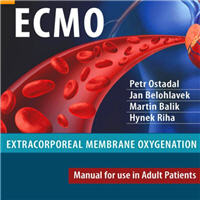Tag: diagnosis
PET-CT in Critically Ill Patients: Diagnosing the Unsuspected
PET-CT precisely detected the deep foci of infection about 48 hours prior to the diagnosis of sepsis. The cases reports suggested the use of this image technique in ICU for patients with sepsis of unknown origin. We admitted... read more
Shared Decision Making – The Importance of Diagnosing Preferences
Shared decision making occurs when patients and clinicians reach a formulation about the presenting problem and discuss how to manage it. If there are several reasonable alternatives, the alternatives should be explicitly... read more
Implementing a bedside assessment of respiratory mechanics in patients with ARDS
Implementing a systematic respiratory mechanics test leads to frequent individual adaptations of ventilator settings and allows improvement in oxygenation indexes and reduction of the risk of overdistention at the same time.... read more
Policies That Limit Emergency Department Visits and Reimbursements Undermine the Emergency Care System
Emergency department (ED) visit rates in the United States have been rising over the past 2 decades, outpacing population growth.1 These visits are portrayed in the lay press as unnecessary visits that must be reduced or... read more
The Dreaded Acute Compartment Syndrome
When obtaining intracompartmental pressures, place the catheter within 5cm of the fracture level, with the transducer secured at the level of the measured compartment. Make sure to keep the catheter tip outside of the actual... read more
We Should Avoid the Term “Fluid Overload”
Using the right word or phrase to describe a specific pathologic process/patient diagnosis and/or status is important, not only within the intensive care unit team, but also when we communicate with external consultants.... read more
Sepsis: Learn the Signs and Document
Writing in the MJA, researchers have reported the findings of a prospective cohort study comparing estimates of the incidence and mortality of sepsis using clinical diagnosis or the Australian and New Zealand Intensive Care... read more
High Flow Nasal Oxygen for Acute Bronchiolitis?
Since bronchiolitis is a clinical diagnosis, there is no test, including viral testing and radiography, which rules it in or out (Schuh et al 2007). Sadly, despite multiple guidelines (NICE, AAP, CPS), there has also been... read more
Sepsis Around the Cradle of Humankind
While representing the cutting edge of civilization everywhere, mothers and their newborn infants are a population particularly vulnerable to sepsis.1 By recognizing the importance of antiseptic prophylaxis (handwashing),... read more
Trends in Visits to Acute Care Venues for Treatment of Low-Acuity Conditions
From 2008 to 2015, total acute care utilization for the treatment of low-acuity conditions and associated spending per member in the United States increased, and utilization of non-ED acute care venues increased rapidly.... read more
New Guideline Aids in Diagnosing Idiopathic Pulmonary Fibrosis
A new international guideline has been developed to help physicians diagnosis idiopathic pulmonary fibrosis (IPF), a rare and often fatal lung disease whose cause is unknown. IPF is the most common and deadly form of a group... read more
3 Notable Leaps in Sepsis Care
Sepsis is deadly, it's expensive, and there are abundant initiatives underway that could lead to earlier detection, lowering costs, and saving lives. In May 2016, the Healthcare Cost and Utilization Project and the Agency... read more
When Does an Effusion Become Pericardial Tamponade?
Pericardial tamponade occurs when fluid within the pericardial sac impairs filling of the right-sided chambers, leading to a decrease in cardiac output and hemodynamic compromise. It is neither a clinical nor an echocardiographic... read more
Integration of Lung Ultrasound in the Diagnostic Reasoning in Acute Dyspneic Patients
Seventy-six physicians responded to the study cases (228 clinical cases resolved). Among the respondents, 28 (37%) were female, 64 (84%) were EPs, and the mean age was 37±8 years. The mean NUDs, respectively, when physicians... read more
Could Ultrasound-guided Internal Jugular Vein Catheter Insertion Replace the Use of Chest X-ray?
The implementation of ultrasound protocols during catheter placement has demonstrated multiple advantages that increase accuracy and allow medical teams to reduce operative time, potential complications, and procedure costs.... read more
Rapid, Positive Growth of Sepsis Coordinator Network Proves Need
Almost 1,000 healthcare professionals have joined the Sepsis Coordinator Network since its launch two months ago. There’s a saying that teamwork divides the task and multiplies the success and if the Sepsis Coordinator... read more
Why is trauma activation so expensive?
I can understand hospitals charging a fee for trauma activations to help recover some of the costs of having a trauma service. The staff may require some special training. Managing the service, collecting data, and other... read more
Pheochromocytoma Diagnosis
Pheochromocytoma is a catecholamine-producing tumor that originates from chromaffin cells of the adrenergic system, most commonly in the adrenal medulla. There are two main steps in the diagnosis of pheochromocytoma: biochemical... read more
Noninvasive Retinal Analysis for Cardiovascular Profiling of Patients with COPD
Chronic obstructive pulmonary disease (COPD) is a complex disease with many patients suffering from cardiovascular comorbidity. However, cardiovascular diseases remain often undiagnosed in COPD. Assessment of the retinal... read more
Harrison’s Pulmonary and Critical Care Medicine
Featuring a superb compilation of chapters related to pulmonary and critical care topics, this concise, full-color clinical companion delivers the latest knowledge in the field backed by the scientific rigor and authority... read more

Diagnosis of Sepsis from a Drop of Blood by Measurement of Spontaneous Neutrophil Motility in a Microfluidic Assay
Current methods for the diagnosis of sepsis have insufficient precision, causing regular misdiagnoses. Microbiological tests can help to diagnose sepsis, but are usually too slow to have an impact on timely clinical decision-making.... read more
Reducing contamination rates in urine samples
Contamination is thought to be a significant problem. Depending on which study you look at, the rates of urine contamination can be 17% or upwards. The standard method of midstream urine collection is for the healthcare professional... read more









